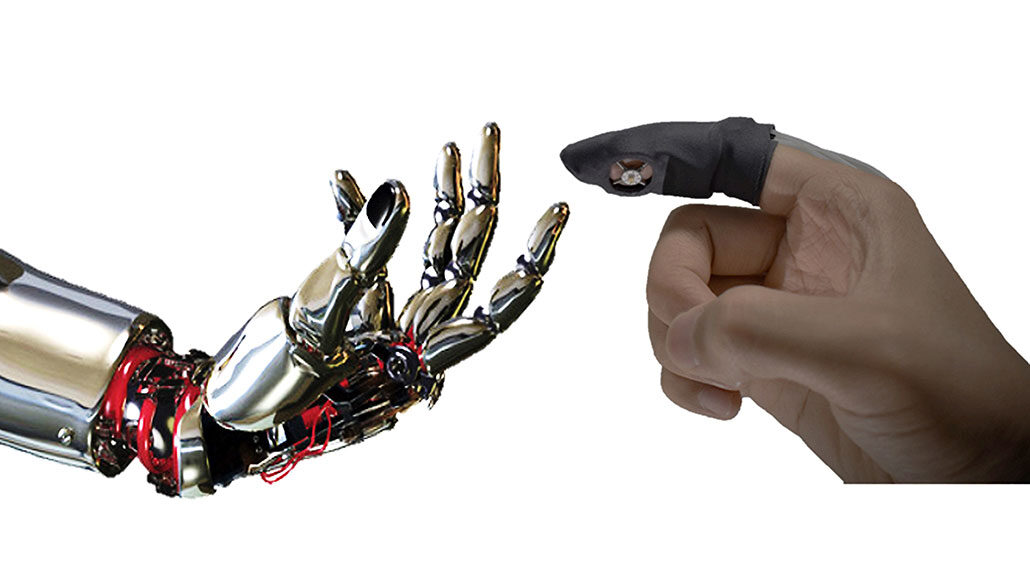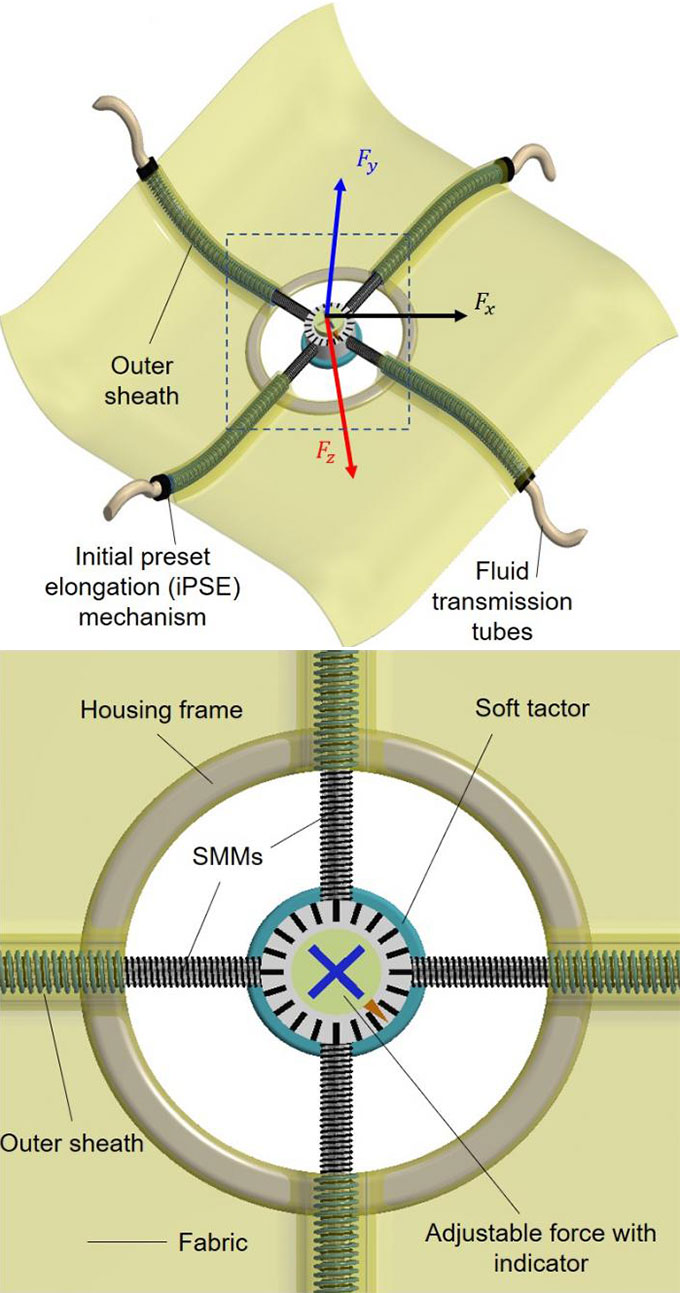This artificial skin feels ‘ghosts’ — things you wish were there
Stretching fabric across skin makes the brain think you’re touching distant surfaces

A device made from a new kind of artificial skin, shown covering a finger, simulates the sense of touch.
UNSW Sydney
Long-distance communication may benefit from a robot’s touch. And that may come in the form of a new gadget developed by engineers in Australia.
Haptic is a term for things that relate to one’s sense of touch. The new haptic device slips over someone’s finger like the tip of a glove. Stretchy tubes inside fabric interact with the skin to simulate touching or feeling something. This new device makes it possible for people to feel something that isn’t actually at their fingertips.
Its inventors see a variety of potential uses. “A surgeon can wear our gloves and touch a patient far away,” says Thanh Nho Do. He’s an engineer at the University of New South Wales in Australia who led design of the new skin stretch device, or SSD. “In the deep sea or in space, a robot can pick up things. This can let you feel [what the robot touches]. When a person has an artificial limb, they can wear this and feel [what it touches].”
Scientists have been working on haptic devices for years, but touch is a delicate sense, Do says. It’s unlike vision, which can be communicated over distances with cameras and monitors. It’s also unlike hearing, where sounds can be relayed to the ears with microphones and speakers.
In recent years, scientists have been finding new ways to build and improve haptic devices. Some have used vibration. (The button on a smart phone, for example, uses a small vibration to simulate the pressing of a button.) Others use motors to physically push on a user’s skin. These, however, often require bulky and uncomfortable parts, notes Do. In fact, he observes, “Most of them have a big motor, and when it moves on the skin it’s not comfortable.”
His group took a new approach. They realized that the brain gets haptic information when something moves across the skin. With that idea in mind, they wanted to design something that could slide and stretch.
Their SSD is made from a piece of fabric into which tiny, fluid-filled tubes have been sewn. Those tubes all connect to a small disk, called a tactor. That tactor has a tiny motor that allows it to move short distances within a small area. In fact, it can move in all three dimensions. The moving tactor tugs on the tiny tubes. As the tubes expand and contract, they act like artificial muscles.
The researchers described their new device August 27, 2020 in IEEE Access.
The ‘magic’ of stretch

“The fabric is what makes the magic of this,” says engineer Nadja Bressan. As the tubes in it stretch and contract, they produce movement that can be sensed. “The stretch is where everything happens,” Bressan says. She did not work on the new invention. In her lab at the University of Prince Edward Island, in Charlottetown, Canada, she develops robotic technology for use in medicine.
Bressan says she admires the innovative concepts that underlie the new design. However, she cautions, with extended use the device may wear down. The designers will have to find a way to make their SSD both functional and durable, she says.
Do says he was inspired to work on the SSD after spending many years working on surgical robots. One day, a doctor asked him: When will I put on a glove and feel what the robot feels? Do kept that question in mind as he spent years learning about the sense of touch and haptic technology.
His group first developed the tubes that simulate muscles about three years ago. Since then, they’ve been testing different ideas about how to use those tubes in SSDs. They had their first test model about a year ago. Its tactor was about 10 millimeters (0.4 inch) across, which Do thought was still too bulky. His team’s latest SSD has a tactor only 5 mm across. And Do says an even smaller one is in the works.
His team also is working on adding the ability to sense hot or cold to their device. “Then you can not only feel the force, but also the temperature,” Do says. “If you wanted to touch ice in space, you could.”
Correction: Changes were made to point out that although tubes in the new fabric stretch, the overall fabric itself is not stretchy.
This is one in a series presenting news on technology and innovation, made possible with generous support from the Lemelson Foundation.







